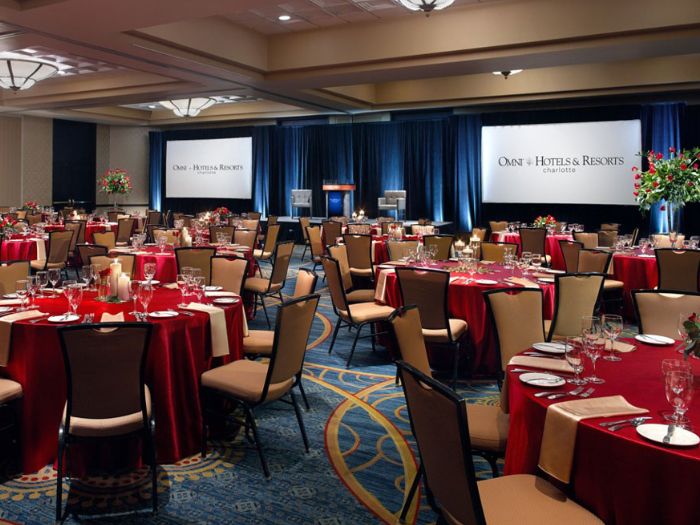Creating a clear, effective request for proposal (RFP) for audio visual (AV) services is crucial to the success of any corporate event. Whether you’ve been tasked with this responsibility for the first time or you’re looking to refine your approach, there are strategic steps you can take to get top-quality proposals from AV vendors and ultimately achieve a seamless event experience.
Understand the Purpose of Your RFP
At its core, your RFP isn’t just a formality. It’s a document that helps AV vendors understand the unique scope, goals, and required functionalities of your event. This ensures proposals are accurate and aligned with your needs, saving everyone time and preventing miscommunication.
While there are plenty of templates online and from industry groups, what truly makes a high-quality RFP is the substance: the questions you answer and the details you share.
Start with the Basics
Before getting into technical requirements, cover these essentials:
– Event Dates: Pin down the exact dates, including any set-up or rehearsal days.
– Venue Details: Name the venue, its location, and specify the exact rooms/spaces in use.
– Event Name and Client: Be precise about how the event should be referred to in documents. For example, “ACME Sales Explosion 2027” rather than a generic label.
– Event Type and Attendees: Is this an internal sales training, a user conference for clients, or something different? Clarify who will attend, their expectations, and the event’s primary objective.
– Attendance Model: Will participants be in-person, virtual, or is it a hybrid gathering? Define the priorities (e.g., is the in-room energy most important, or is the global virtual experience the focus?).
By thoroughly outlining these “who, what, where, and when” elements, you give vendors the context to tailor their proposals.
Explain Event Objectives and Unique Needs
Don’t assume AV providers will intuit your goals. Explain what you want to achieve, whether it’s energizing internal stakeholders, impressing clients, or broadcasting to a remote workforce. Highlight anything unique or non-negotiable about your setup, and provide relevant history- what’s worked before, what hasn’t, any particular challenges with past events.
Venue and Room Details Matter
Beyond just the venue name, specify which rooms you’ll be using and what activities are happening where. If you’ve run similar events, note which room setups and technical configurations have contributed to past success, or share pitfalls you’d like to avoid. This helps vendors offer solutions that truly fit your space and needs.
Clarify Your Budget Early On
It can feel uncomfortable to share budget constraints, but doing so allows vendors to respond realistically. Rather than squeezing every dollar, an experienced partner will propose solutions within your specified range, making the process more efficient for both parties.
Define Baseline Requirements
Detailing your “must-haves” ensures proposals don’t overlook essentials. Consider these elements:
– Audio: How many people need to hear, and are there any special considerations (e.g., panels requiring multiple microphones)? For instance, if your largest panel is eight people, state that clearly so the provider knows the maximum mic setup needed.
– Display: What will be shown? If attendees need to analyze intricate data, screens must be high-resolution and visible from all angles. If the focus is on dynamic visuals for an awards show, that changes the approach.
– Lighting: Will there be recordings? Even stage lighting is essential for video, while live performances may call for dramatic effects.
– Technical Staff: Identify key team members you’ll need. A “TD” (technical director) might be necessary to keep shows running on schedule, while an “A2” will manage microphones for executives and VIPs. Even if you don’t know all staffing details, spotlight roles critical to your event’s flow.
– Presentation Support: If last-minute slide changes are likely, note this upfront so AV providers plan for dedicated support staff.
Identify Enhancements and “Nice-to-Haves”
Once you’ve covered the basics, outline any additional features you’d like to explore. Maybe that’s a scenic piece highlighting a brand mascot, slick live-streaming capabilities, high-tech LED services, or post-event video editing. Make a clear distinction between essentials and enhancements; this guides vendors in prioritizing their proposals and offering creative solutions within your budget.
Include Visuals and Reference Materials
Share photos, floor plans, or videos from past events or site visits. Any resource that conveys your vision, previous setups, or unique venue characteristics can significantly streamline proposal development.
Expect a Follow-Up Conversation
Even a thorough RFP is often just the starting point. Most AV vendors will want to discuss your document, clarify details, and ensure everyone’s aligned before developing their proposal. Be prepared for at least one detailed conversation.
By providing complete, organized, and thoughtful information upfront, you empower your AV partners to present proposals tailored to your exact goals, setting your event up for success. Need more guidance? Industry professionals, like those at LEMG, are ready to help, ensuring your next event’s technical execution is as exceptional as your vision.
Do you need a quote for AV support for your next event?
We’d love to help! Submit your request here
